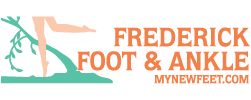Super Bowl LI (51) kicks off on February 5th, 2017 at 6:30pm ET at NRG Stadium in Houston, TX.
A few years back, the NCAA released statistics stating that just over 50% of football-related injuries affect the lower limbs. This isn’t too hard to believe, considering some of the most famous Super Bowl injuries involved the foot and ankle. Steve Wallace of the 49ers broke his left fibula in Super Bowl XXIII just a few plays before Tim Krumrie of the Cincinnati Bengals went down in history for shattering his left ankle. Some of the most common foot and ankle injuries that occur in the NFL, and in football players in general, include Lisfranc injuries, Achilles tears, ankle fractures, and turf toe.
Lisfranc injuries are defined by the American Foot and Ankle Society as an injury that occurs in the metatarsals that dislocates a metatarsal bone from the joint that connects to the bones of the midfoot. This injury can also include the tendons and ligaments of the midfoot. These injuries are usually caused by some sort of blunt trauma to the midfoot, and is often considered one of the worst injuries because of the placement of the injury. Historically, of 28 players that sustained this injury between 2000 and 2010, only two were out of the NFL competition for good.
The Achilles tendon is the tendon that connects the calcaneus, or the heel bone, to the muscles of the calf. Achilles injuries can occur in many different forms that can range from a strain, to a partial or total tear. Most partial tears are longitudinal, meaning they occur vertically down the tendon, while a total rupture of the Achilles occurs horizontally, dislocating the band entirely. Most often, the cause is a sudden and drastic change in tension to the area. Many football players injure their Achilles from repeated wear and tear on the area and statistics show only 2/3 of NFL players ever come back to the game after a rupture.
The severity of the ankle injuries varies drastically, and can range from a slight sprain, to a dislocated fracture, such as Tim Krumrie’s injury. There are three bones that make up the ankle – the tibia, fibula, and the talus. These bones compose joints that are meant to be very mobile and flexible, and provide support for the entire body, connecting to the foot with the help of many tendons and ligaments, including the Achilles. In the case of Krumrie, his left foot remained planted firmly on the ground and force of his body weight working in the opposite direction resulted in a high ankle fracture, meaning the fracture occurred in the bone above the joint. A similar injury to that of Oakland Raiders’ Derek Carr in December of 2016.
Turf toe is a common term for an injury caused by repetitive jamming or pushing off the joint in the big toe, such as when running or jumping. The condition got its nickname because it is very common in athletes, like football players, who play on artificial turf which is harder than grass, but it can happen on any type of playing surface without supportive shoes. Symptoms include redness, swelling, and lack of mobility in the joint, and often occurs suddenly and worsens with time. Turf toe will be diagnosed using a simple x-ray, and can usually be resolved in 2 to 3 weeks with conservative treatment such as taping and use of anti-inflammatories. So, no worries if your favorite player is diagnosed with Turf Toe, they will be back in action in no time!
While these issues are more common in star NFL players, they can also happen in a simple pick-up game in your back yard, so make sure you are always taking necessary precautions to prevent injuries, such as stretching and bracing areas that are likely to be hurt. Not everyone can have a million-dollar medical team behind them 24/7, but at Frederick Foot & Ankle, you could have an award-winning staff that will keep you happy, healthy, and keep you moving!
If you or anyone you know has a foot and ankle injury, we have same day appointments, Saturday hours and two convenient locations in Frederick and Urbana, MD. Call us at (301) 668-9707 to schedule an appointment. Follow us on Instagram and Twitter @mynewfeet and “Like Us” on Facebook.

Add a Comment